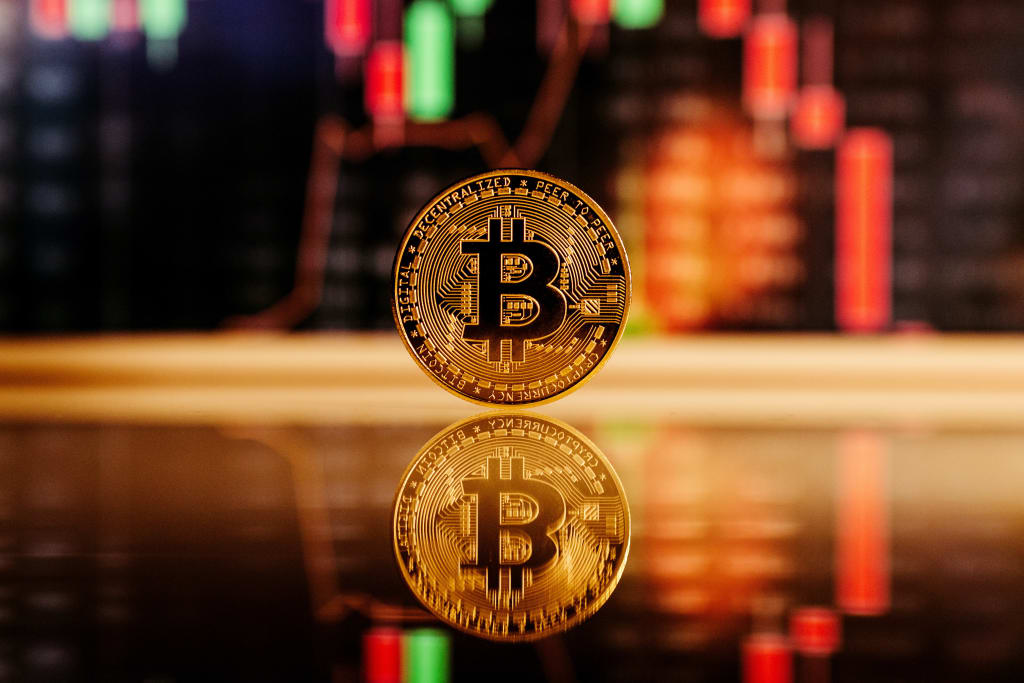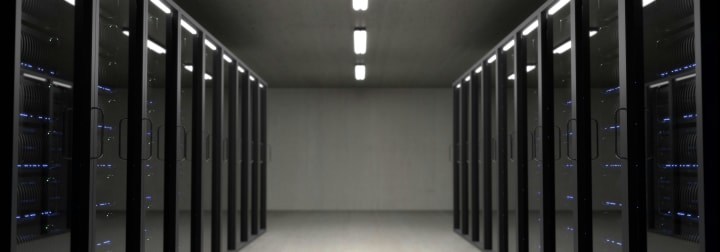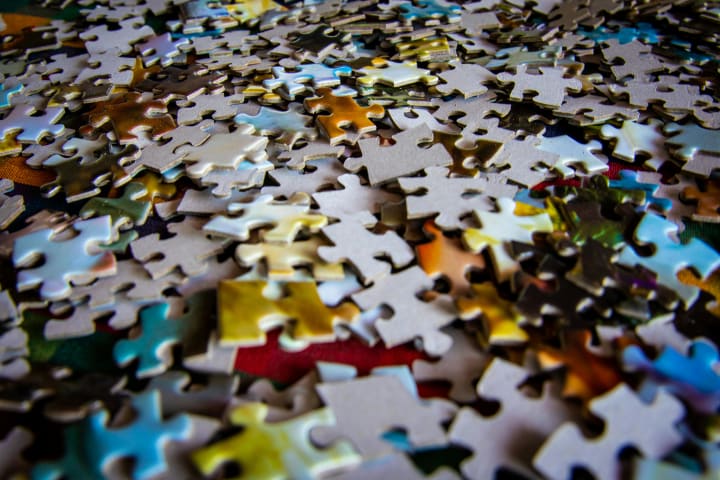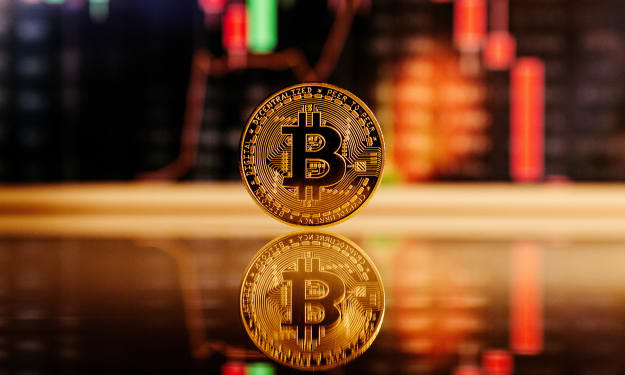Stock Trading - Entry 16
How mining blockchains works (simply) AND my 13 questions to analyse a blockchain

Alrighty folks, it's time for me to show you what happened when I got my hard hat out, put in a new battery, and turned its light on because I am going deep on mining in this article. Okay, it's blockchains, so a computer is going to do all the work for me - or will it?
My previous forays into investigating blockchains to outright buy (like I would a currency or valuable commodity) were dismal. I mean, there are those who are trying to re-create gold-backed currencies, which I discussed early on in entry 7. Then there are those that I consider to be outright lies and scams, like the one I mentioned at the top of 2024 in entry 13.
So I asked myself, instead of investing in blockchains directly, why not go the other way, into mining? Admittedly, I had already put this question way back in the recesses of my mind since I figured it required too much effort (which says a lot given my personality). When I was analysing Total Telecom (before buying it), Quarterhill, and AirIQ in entry 14; I somehow stumbled into blockchain mining in my online research - I don't remember how so don't ask. (If you don't believe me, ask my wife about my supposedly selective memory, but anyway.)
The following is what I found and what I understand about mining blockchains in general, which I endeavour to outline simply, especially since I am neither a math genius nor a blockchain programmer. This is NOT advice, just my understanding.
When a blockchain is released, the tokens (the units of the blockchain you can buy/use/own) don't just magically appear and get traded. They need computers to run things and do the checks each time a token changes hands (AKA verify transactions).
Enter miners. Miners have a whole computer, or a just a dedicated circuit board they install in a computer, and leave it on all the time to run things and verify transactions. Some miners have more than one of these dedicated computers (nodes); other miners go freaking huge.

That's all well and kind of miners to do, but they don't do it for free. Computers and electricity cost money. This means only a percentage of a node's processing power can be used to run things and verify transactions. The rest of the processing power needs to generate rewards/profit for miners. Typically, miners get rewarded by receiving a free token (or a tiny fraction of a token) each time their node (computer) does something that the blockchain says is worthy of reward. That's part of how tokens magically appear.
The simplest logic I can think of from a miner's perspective is the blockchain knows there are dedicated nodes to run things and verify transactions, so the blockchain makes more tokens available. Miners can then sell those tokens for cash on blockchain/cryptocurrency exchanges like Netcoins (use this link for a free $25 to invest how you see fit). Miners can use that cash to cover costs and either expand mining operations or buy dairy-free ice cream and enjoy life.

Is this basic process subject to inflation? If you define inflation as printing money without end then it depends on whether the blockchain has a fixed maximum number of tokens that can ever exist (supply limit). Many, but not all blockchains have this feature and for those that do, their maximums are publicly available. (I really like that level of transparency).
For me, the fun part of reading or watching people who have setup blockchain mining operations of several or more nodes is all the similarities between them and traditional miners of things like oil and metals because mining generally involves:
- an initial outlay of cash to buy actual equipment (e.g. nodes, electrical outlets, space bars)
- setting up the operation (e.g. a cool, soundproof shed with enough electricity)
- digging (for tokens) day in, day out
- hoping to hit pay dirt (AKA speculation)
- buying supporting industries (e.g. installing solar panels to eliminate electricity costs)
- time before one can break even (months or years)
See? It's interesting how generations redefine words like gaming and mining, but I digress.
From what I have heard, many people miss a few very important points that can make or break a blockchain mining operation (of any size).
First, blockchain mining still involves speculation (guessing future value). Sure I would spend real money on computer equipment and electricity to end up with (a fraction of) an intangible token of some blockchain, but how much could I sell the token(s) for? That will vary and as anybody who looks at price charts of blockchains will see instantly: there is a lot of variation. This makes it difficult to know (a) if the price of a token will ever be high enough to break even and (b) how many tokens I as a miner will have when the price is at that level.
Second is how late in a blockchain's life I become a miner. I don't know when new blockchains come out. Fortunately, there are currently tools out there where I can calculate roughly how long it will take before all the tokens of a fixed-quantity blockchain have been mined. From what I have seen, if I were to start when two-thirds of the tokens have been mined, I would absolutely need to do an analysis to see if it is worth it, even if I only have one node.
Third is processing power. Remember I said that nodes (computers that mine blockchains) only use a percentage of their computing power to run things and verify transactions? The rest of that processing power needs to be for miners to earn rewards, so what other things do those nodes compute? The answer may surprise you and it is also the reason why nodes tend to be loud.
Nodes require many loud fans to stay cool enough to not melt because those nodes operate at such high levels continuously that they get very hot - at least for some blockchains. What are they so busy computing? Many blockchains give nodes puzzles to do. You know, like a one-billion-piece jigsaw puzzle.

Complete a puzzle, get a reward of one blockchain token (or a tiny fraction of a token). It is at this point I find many people overlook one critical detail. Newsflash #12: Solving puzzles (of any complexity), where the solution itself is meaningless to anyone, is useless. Those nodes are spending most of their time spinning their wheels like a car on a lift, going nowhere - and equally loud, apparently.
With this rudimentary understanding, my questions are starting to pile up. After weeks of reflection, I have distilled my analysis of a blockchain to these questions:
- Is "puzzle processing time" actually useless to the running of the blockchain?
- Has the "puzzle processing time" been converted into something useful for...well...anything outside of the blockchain?
- How does the blockchain's use case (which has real-world/analogue applications) impact the general technology requirements of a node?
- What is the optimal supply limit for the blockchain and what happens when that is reached?
- What happens to tokens that are simply lost (like a penny falling into the ocean)?
- How is the blockchain structured from an economics/business standpoint?
- Can the parameters of the blockchain be changed after-the-fact?
- What is or can be used to form/drive the value of the blockchain?
- Given the value drivers, how can the principal profiteers of a blockchain profit from the blockchain?
- Who/what is the competition, if any?
- Which parties benefit from creating demand for computer hardware used in nodes? What are the intents of those parties?
- Would anything to do with the blockchain be worth regulating for the benefit of any party?
- Imagine the blockchain was a feat of social engineering (AKA grand scale manipulation). What would that hidden objective be?
I never would have guessed I would find a blockchain to serve as a good example to address these questions, but I did and I will tell you what it is, how it works, and show how well it stacks up against my 13 questions. Subscribe for free below to become notified right when those next few articles are published. Otherwise, you will have to keep an eye out here to read those and other entries in my stock trading journey.
About the Creator
Richard Soulliere
Bursting with ideas, honing them to peek your interest.
Enjoyes blending non-fiction into whatever I am writing.






Comments
There are no comments for this story
Be the first to respond and start the conversation.